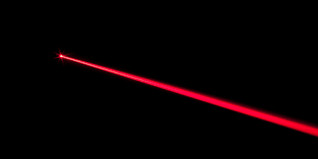With each passing day, newer, safer and more conservative innovations are being introduced in the field of dentistry. One such innovation is the use of lasers performing various dental procedures, which were first introduced in 1960. This article explains everything you need to know about the use of lasers in dentistry.
 WHAT ARE LASERS?
WHAT ARE LASERS?
Lasers are primarily a narrow and highly focused beam of light energy. When this beam hits the soft and hard tissues of the body, it elicits a specific response. This response can be used to treat various dental problems. The term laser is an acronym, which refers to “light amplification by the stimulated emission of radiation”.
WHAT ARE DIFFERENT TYPES OF DENTAL LASERS?
There are mainly two different types of lasers; soft tissue and hard tissue lasers. There are 20 different types of soft tissue lasers which are used by dentists for performing the various procedure. A soft tissue laser is used for cutting soft tissues such as the mucous membranes, lips, cheeks, gums and muscles. Some of the common uses of soft tissue dental lasers include periodontal surgery, gum grafting or reshaping, treatment of oral ulcers and removal of excessively tight muscular attachments in the oral cavity.
The other type of lasers are hard tissue lasers, which are used for cutting, dissolving or reshaping hard dental structures like the bones, cartilage and the teeth. One of the most common uses of hard tissue lasers is the removal of tooth decay and for enhancing the bleaching effect of teeth whitening formulas. Other uses of hard tissue lasers include preparation of teeth for the placing dental fillings, attaching veneers, crowns or bridges. Dentists also use these lasers to perform cleanse and prepare the root canals during the root canal treatment (RCT) procedure.
ARE DENTAL LASERS SAFE FOR CLINICAL USE?
Dental lasers are pretty safe for clinical use, provided they are used by qualified and trained dentists. Although dental lasers have not been officially approved by the American Dental Association (ADA) for clinical use, the Food and Drug Authority (FDA) has allowed dentists to perform several procedures with laser dentistry . However, the ADA seems optimistic regarding the potential benefits of lasers in enhancing safety and efficacy of various dental procedures.
At the moment, the ADA has not included lasers in the curriculum of dentistry in the US. This means that the dentists have to undergo professional development courses after graduating to learn the use of lasers for a specific purpose. Once they have undergone the pre-requisite training, which is usually offered by the laser manufacturing company, only then they can start using lasers for the intended use. Therefore, if you’re planning to undergo dental treatment with lasers, you must confirm with your dentist whether he or she is sufficiently trained to perform the said procedures using the laser technology.
WHAT ARE THE BENEFITS OF DENTAL LASERS?
As a patient, you might ask “how do I benefit from dental lasers?”. Perhaps, the biggest advantage of dental lasers is their excellent precision during surgical procedures, and their ability to elicit minimal damage to the healthy tissue structures. As a result, tissues treated with dental lasers not only heal very quickly but they also have minimal scarring and postoperative pain in comparison to the conventional dental treatment procedures. Dental lasers also eliminate or reduce the requirement for the administration of local anesthesia during surgical procedures. Lasers also prevent tooth sensitivity following tooth preparation because they tend to seal off the exposed tooth surfaces. Finally, dental lasers also minimize post-operative inflammation and bleeding due to their cauterizing effect.
Despite the numerous benefits of lasers in dentistry, there use is still limited. Due to the high initial investment required and installation, and also because not all dentists are trained to use lasers. However, the day is not far when the use of lasers in general dentistry will become a routine practice.



